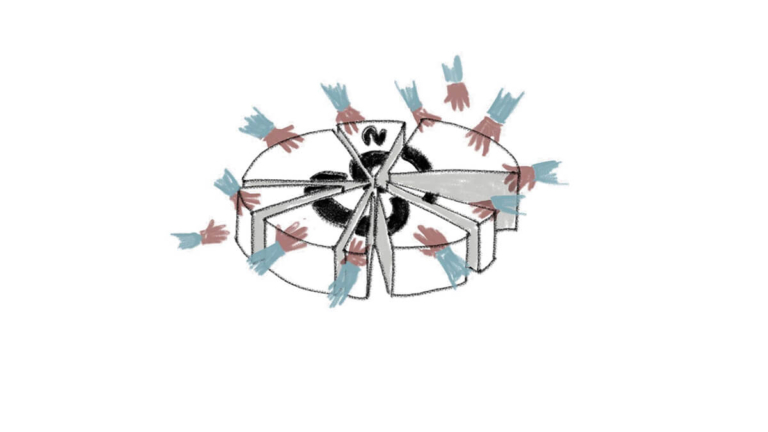Casebook Info
In a historic first, the Dutch courts held that the government has a human rights obligation to reduce the risk of dangerous climate change by cutting greenhouse gas emissions. The courts ordered the government to reduce emissions by at least 25% below 1990 levels by 2020. This victory inspired a wave of similar cases around the world.
- Year Filed 2013
- Year of Most Recent Ruling 2019
- Year of Final Ruling 2019
- Jurisdiction The Netherlands
- Court Name Supreme Court of the Netherlands
- Primary Focus Mitigation
- Ruling On Merits
- Plaintiff(s) Urgenda Foundation and 886 Dutch citizens
- Respondent(s) The Netherlands
- Outcome Granted
- Organizational leader of the litigation Urgenda Foundation
- Link to the decision/ruling
Background
Urgenda— which is a contraction of the words ‘urgent’ and ‘agenda’— was first founded in 2007 as an initiative of a research institute at the Erasmus University in Rotterdam. The following year, Urgenda became incorporated as an environmental organization dedicated to the “prevention of climate, through the reduction of CO2 emissions ” (Summons, ¶51). This relatively young organization would go on to lead one of the most impactful climate change lawsuits to date.
Urgenda Demands a Reduction in Emissions
In 2012, Urgenda and a group of Dutch citizens sent a letter to the Dutch government asking the government to adopt measures to cut greenhouse gas (GHG) emissions. In its response letter, the government declined to take action, and, in Urgenda’s words, “acknowledged that its actions are insufficient to prevent dangerous climate change.” The government agreed that drastic emissions reductions are necessary, but it argued that the Netherlands should not sacrifice its prosperity by taking more aggressive action than other countries (Summons, ¶387). In the government’s view, climate change primarily requires an international approach. So, in 2013, Urgenda and 886 co-plaintiffs sued the government for failing to protect its citizens from danger.
The plaintiffs argued that the state had a duty to take more aggressive action on climate change. They pointed to three sources of law that established the state’s duty of care: Articles 2 (right to life) and 8 (right to respect for private and family life) of the European Convention on Human Rights (ECHR), Article 21 of the Dutch constitution (the state will keep the country “habitable” and will “protect and improve the environment,” and the general duty of care provision of the Dutch civil code. This duty of care, the plaintiffs asserted, required the Dutch government to reduce emissions by 25 to 40% below 1990 levels by 2020. The IPCC established this as the target for Global North (‘Annex I’) countries, which would give the world a 50% chance of avoiding the disastrous consequences of a 2C rise in global temperatures (Summons, ¶387). The government’s existing climate policy would only see the country reduce emissions by a maximum of 17% by 2020 (District Court Decision, ¶4.26).
The District Court Orders a Reduction in Emissions
In 2015, the District Court of the Hague sided with the plaintiffs, making it one of the first courts in the world to recognize that governments have a legal obligation to reduce GHG pollution. The court ordered the Dutch government to limit GHG emissions to 25% below 1990 levels by 2020.
The court based its decision on the general duty of care laid out in the Dutch civil code. The code, as interpreted through the doctrine of hazardous negligence, requires parties to take to take precautionary measures to mitigate harm from a foreseeable hazard. The court reasoned that the duty of care should be informed by the principles stated in the UNFCCC and the Treaty on the Functioning of the European Union (TFEU) (District Court Decision, ¶4.55). Drawing on the UNFCCC’s principle of fairness, the court assessed that:
[Climate] policy should not only start from what is most beneficial to the current generation at this moment, but also what this means for future generations, so that future generations are not exclusively and disproportionately burdened with the consequences of climate change. The principle of fairness also expresses that industrialised countries have to take the lead in combating climate change and its negative impact . . . from a historical perspective the current industrialised countries are the main causers of the current high greenhouse gas concentration in the atmosphere and . . . these countries also benefited from the use of fossil fuels, in the form of economic growth and prosperity. Their prosperity also means that these countries have the most means available to take measures to combat climate change.
(¶4.57)
The court also reasoned that the precautionary principle, as embodied in the UNFCCC and the TFEU, requires states to take action to prevent harm even in the absence of clear scientific certainty (¶4.58, 4.61).
The court dismissed the state’s argument that it was not causing climate change since it does not emit GHGs. It explained that the state had control over Dutch emissions and it “expressly accepted its responsibility for the national emission level” when signing the UNFCCC and the Kyoto Protocol. The court further established that any GHG emission, “no matter how minor, contributes to an increase in CO2 levels in the atmosphere and therefore to hazardous climate change” (¶4.79). Thus, the court dismissed the government’s argument that a stricter emissions reduction target would only have a negligible effect on climate change.
The court concluded that the Dutch government has a duty of care to mitigate GHG emissions. The government had failed this duty and acted negligently by setting a climate policy that would only achieve a maximum emissions reduction of 17% below 1990 levels.
Despite calls for the government to accept the district court’s judgment, the government decided to appeal the decision.
Affirmed by the Court of Appeal
In its 2018 decision, the Court of Appeal of the Hague largely agreed with the district court and affirmed the district court’s order.
The court held that the government has a positive obligation to prevent future violation of the rights protected by the ECHR, thereby disagreeing with the district court’s finding that the plaintiffs could not rely on the ECHR. The court reasoned that climate science shows that there is a “real threat of dangerous climate change,” which would cause “loss of life and/or a disruption of family” (Court of Appeal Decision, ¶45). As a result, the government has duty of care to prevent such harm from materializing by mitigating GHG emissions.
The court then assessed whether or not the government had met its obligation by acting with due care. The court found that the state had “done too little to prevent a dangerous climate change and is doing too little to catch up” (Court of Appeal Decision, ¶71). Delaying mitigation efforts would burn through the carbon budget and force more ambitious mitigation measures at a later time. The court’s review of emissions reduction scenarios led it to conclude that the Netherlands needed to reduce emissions by at least 25% by the end of 2020 (Court of Appeal Decision, ¶73). The government had to take more substantial and immediate action on GHG pollution.
The government appealed the court’s decision, arguing, among other things, that the government did not have a human-rights based obligation to reduce emissions. Two chief advisors to the Supreme Court of the Netherlands published an advisory opinion that reviewed each the government’s arguments and concluded that they were not persuasive. Thus, they advised the Supreme Court to uphold the lower court decisions.
The Supreme Court Makes History
In 2019, the Supreme Court issued a landmark opinion affirming the lower court decisions. The court held that the government had to reduce GHG emissions by at least 25% below 1990 levels by the end of 2020.
The court followed similar reasoning to the Court of Appeal’s reasoning. The court first found that ongoing GHG pollution risks dangerous climate change. It noted that warming beyond 2C risks hazardous consequences, including threats to human lives, health, and the food supply (Supreme Court Decision, ¶4.2). These climate change consequences would clearly have an impact on the rights to life (Article 2) and respect for private and family life (Article 8). A state can reduce the risk of these future rights-violations by taking action in the present:
The fact that this risk will only be able to materialise a few decades from now and that it will not impact specific persons or a specific group of persons but large parts of the population does not mean – contrary to the State’s assertions – that Articles 2 and 8 ECHR offer no protection from this threat.
(¶5.6.2)
The court noted that the European Court of Human Rights (ECtHR) had not issued a decision on climate change, but felt it was “sufficiently clear” that the ECHR offers protection from climate-induced harms (¶5.6.3). In May 2024, the ECtHR issued a decision in KlimaSeniorinnen v. Switzerland that largely affirmed the Supreme Court of Netherland’s analysis. The ECtHR held that Switzerland violated older women’s Article 8 rights by failing to sufficiently reduce GHG pollution.
The court explained that the Netherlands must do “its part” to prevent dangerous climate change, “even if it is a global problem” (¶5.7.1). A state cannot avoid its “partial individual responsibility on the basis that other states are not complying with their own partial responsibility (¶5.7.7). Under the UNFCCC, each state is responsible for progressively eliminating emissions under its control, no matter how small those emissions are.
The court engaged in a thorough analysis of different mitigation scenarios before concluding that the Netherlands should reduce its emissions by 25-40% by 2020. This conclusion rested on the IPCC’s target for industrialized Annex I countries, which reflected a broad consensus at the international level. While the target applied to Annex I countries as a group, the court saw no reason for the Netherlands to be responsible for a smaller proportion. Furthermore, the government was unable to show that it would be feasible to reduce emissions by less than 20% by 2020 and still avoid dangerous warming (¶7.4.6).
Finally, the court also dismissed the government’s contention that the case was not justiciable because it concerns political considerations. While the government has wide discretion to adopt climate change policies, Dutch courts play the role of ensuring that these policies are in line with human rights and the constitution. In this case, the lower courts found that the government’s policy was not protecting human rights, but they did not dictate how the government should revise its policy.
- -17% The maximum reduction in emissions that would have occurred under the Dutch government’s policies.
- -25% The court ordered 2020 emissions reduction target for the Netherlands
Strategies
Affirming country / corporate responsibility for their ‘fair share’ of emission reductions, regardless of the actions of other countries or corporations.

The court emphasized that the Netherlands is responsible for its share of emission reductions, regardless of how much other countries were emitting. The Netherlands could not avoid its responsibility by pointing out that other countries were also not sufficiently reducing GHG pollution, nor could it avoid its responsibility on the basis that Dutch emissions make up a small portion of global emissions.
Tying countries’ / corporations’ climate and human rights obligations to international climate and environmental law, including, for example, the temperature target established by the Paris Agreement

In assessing the government’s human rights obligations, the courts drew on international climate law such as the UNFCCC. This law showed that the Netherlands has an individual responsibility to mitigate GHG emissions, and it provided standards and principles for evaluating the government’s climate action.
Using a carbon budget

The court noted that delaying emission reductions would deplete the carbon budget, thereby forcing more drastic reductions at a later time. The court also observed that “each reduction of greenhouse gas emissions has a positive effect on combating dangerous climate change, as every reduction means that more room remains in the carbon budget” (Supreme Court Decision, ¶5.7.8).
Impacts
Urgenda was one of the first major victories in climate litigation. The court’s decision was the first to require a state to adopt a more ambitious climate change policy (Wewerinke-Singh and McCoach, 2021). The case inspired climate litigation around the world and it provided a model for how states could be compelled to reduce GHG emissions by relying on human rights law. Indeed, the case helped to establish that states may violate human rights if they fail to sufficiently mitigate GHG pollution. Scholars identified a wave of “Urgenda-style, or systemic mitigation cases,” that followed the District Court’s decision in 2015 (Maxwell et al., 2022). The case has been “credited with boosting the wider climate litigation movement.”
On a concrete level, Urgenda led the Dutch government to adopt more aggressive emission reduction policies. The government announced large cuts to coal generation after the Supreme Court’s ruling and reserved €35 billion for climate-related measures. The Dutch budget even “lists ‘Urgenda’ measures that need to happen in order to reduce national emissions.”
